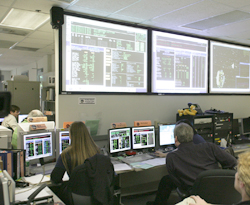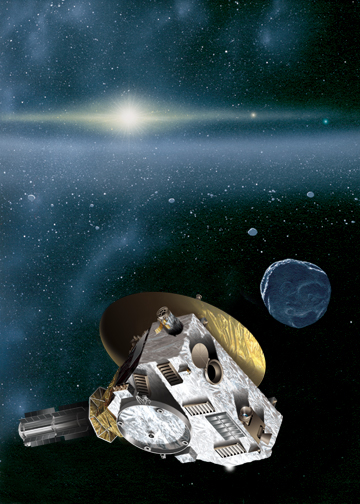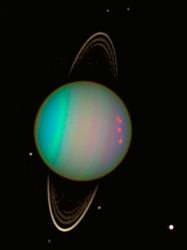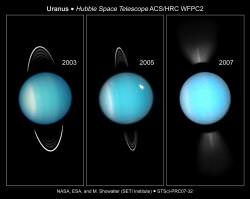[/caption]
Still seven years away from its rendezvous with Pluto, the New Horizons spacecraft was awoken from hibernation for the second annual checkout of all systems. The spacecraft and its team back on Earth will also undergo three months of operations as the New Horizons will make observations of Uranus, Neptune, and Pluto. But the first order of business was uploading an upgraded version of the software that runs the spacecraft’s Command and Data Handling system. “Our ‘brain transplant’ was a success,†says New Horizons Principal Investigator Alan Stern. “The new software – which guides how New Horizons carries out commands and collects and stores data – is now on the spacecraft’s main computer and operating, over a billion miles from home!â€
The mission ops team at the Johns Hopkins Applied Physics Laboratory (APL) in Laurel, Maryland, radioed the software load and the commands to start it earlier this week through NASA’s Deep Space Network of antennas to the spacecraft, now just more than 1.01 billion miles (1.62 billion kilometers) from Earth. In the next 10 days the team will beam up additional new software for both the spacecraft’s Autonomy and Guidance and Control systems.

Alice Bowman, New Horizons mission operations manager at APL, says the spacecraft and its computers are healthy. “The new software fixes a few bugs and enhances the way these systems operate, based on what we’ve learned in running the spacecraft in the nearly three years since launch,†she says. “They also configure the onboard systems to be ready to support the Pluto-Charon encounter rehearsals scheduled for next summer.â€
New Horizons is more than 200 million miles beyond Saturn’s orbit and more than 11 astronomical units (1.02 billion miles) from the Sun, flying about a million miles per day toward Pluto. Annual Checkout 2 (ACO-2) continues through mid-December; follow its progress through frequent updates on the New Horizons Twitter page.
Source: New Horizons Press Release



